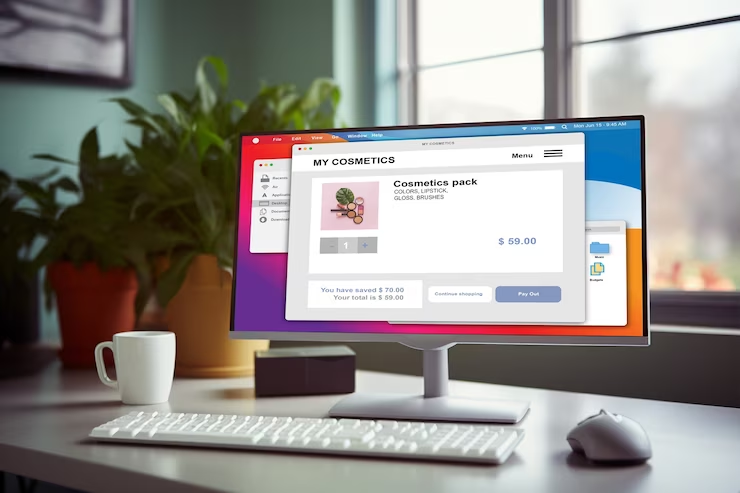In-Memory Key-Value Stores:
- Memcached: Simple, blazing-fast, but lacks advanced features.
- Hazelcast: Scalable, reliable, offers distributed locks and data structures.
- Aerospike: Flash-tiered persistence for faster-than-disk access.
NoSQL Databases with Caching Features:
- MongoDB: Familiar document-oriented schema, and robust caching capabilities.
- Couchbase: Scalable, ACID compliance, strong data persistence with caching.
Cloud-Based Caching Solutions:
- AWS DynamoDB: Fully managed NoSQL database service with flexible data models and caching options.
- Google Cloud Datastore: High-performance, globally distributed database with automatic caching.
Additional Options:
- NATS Streaming: Lightweight, high-performance messaging system for event-driven caching.
- Apache Kafka Streams: Distributed event streaming technology for real-time data caching.
Choosing the Right Alternative:
Consider your specific needs, such as:
- Performance requirements (read/write throughput, latency)
- Data size and access patterns
- Budget and deployment constraints
- Existing technology stack
This list provides a quick overview of Redis alternatives. For a deeper dive, explore the options based on your specific requirements and use the resources provided for further information. There is another article I wrote about >>>>> Ditching the Thorns: Top Alternatives to Cacti for Network Monitoring to learn more.
Beyond Redis: Exploring Caching Alternatives for Your Needs.
In my 25 years of experience as a product reviewer and recommender, I’ve seen Redis reign supreme as the go-to in-memory data store for caching frequently accessed data. But like any technology,

Redis isn’t a one-size-fits-all solution. When performance demands rise, data complexity escalates, or budgets constrain, exploring alternatives becomes crucial. So, buckle up as we venture beyond Redis and discover a spectrum of caching solutions ready to meet your specific needs.
I. A Diversified Landscape: Caching Solutions for Every Niche.
Redis might be the king of pure in-memory caching, but its kingdom isn’t the only one on the map. Let’s delve into different categories of caching options, each with its own set of strengths and weaknesses:
A. In-Memory Key-Value Stores:
- Memcached: This veteran is renowned for its blazing-fast read/write speeds and simple deployment. Think lightning-quick access to session data or static content. However, Memcached lacks persistence and advanced data structures, making it unsuitable for complex caching needs.
- Hazelcast: Stepping up the game, Hazelcast offers not only exceptional speed but also distributed locks, data structures, and rock-solid consistency. It’s perfect for applications requiring high availability and scalability, like real-time analytics or shopping carts. However, compared to Memcached, Hazelcast comes with a steeper learning curve and increased resource requirements.
- Aerospike: Craving the best of both worlds? Aerospike combines in-memory speed with flash-tiered persistence, ideal for large datasets that demand fast access and durability. Think e-commerce platforms or social media feeds. While offering incredible performance, Aerospike comes with increased operational complexity compared to pure in-memory options.
B. NoSQL Databases with Caching Features:
- MongoDB: If you’re already comfortable with MongoDB’s familiar document-oriented schema, its integrated caching capabilities might be just what you need. It’s flexible, offers a rich query language, and seamlessly caches frequently accessed data. However, compared to dedicated caches, MongoDB might exhibit higher write latency, and its learning curve can be steeper.
- Couchbase: Seeking ACID compliance and strong data persistence alongside caching? Couchbase delivers. Its hybrid storage combines speed and durability, while horizontal scaling ensures smooth handling of large datasets. Think financial transactions or healthcare records. But remember, Couchbase’s commercial license and resource intensiveness are factors to consider.

C. Cloud-Based Caching Solutions:
- AWS DynamoDB: Let the cloud handle the heavy lifting! DynamoDB is a managed NoSQL database service with flexible data models and built-in caching options. It’s a breeze to set up, scales effortlessly, and charges only for what you use. However, vendor lock-in and potentially higher costs for large workloads are potential drawbacks.
- Google Cloud Datastore: Experience auto-scaling magic with Datastore. This globally distributed database boasts automatic caching and excellent scalability, making it ideal for globally accessible applications. But limited data consistency options might not suit all use cases.
II. Finding Your Perfect Match: Caching Needs vs. Available Solutions.
Now that we’ve explored the diverse landscape, the next step is finding your perfect caching soulmate. Remember, there’s no one-size-fits-all solution, so understanding your specific needs is key:
- Performance requirements: Do you need blazing-fast reads or efficient writes? What about latency and scalability demands?
- Data size and access patterns: How large is your data set? How frequently is it updated? Does persistence matter?
- Budget and deployment constraints: Are you open-source or managed services? Can you handle operational complexity?
- Existing technology stack: Does the solution integrate seamlessly with your existing tools and libraries?
III. Pros and Cons at a Glance: A Cheat Sheet for Navigating Your Options.
To help you quickly compare and contrast your top contenders, I’ve prepared a handy table summarizing the key strengths and weaknesses of each option:
| Feature | Memcached | Hazelcast | Aerospike | MongoDB | Couchbase | DynamoDB | Datastore |
|---|---|---|---|---|---|---|---|
| Performance | Very High | High | High | Moderate | Moderate | High | High |
| Scalability | Horizontal | Horizontal | Horizontal | Horizontal | Horizontal | Auto-scaling | Auto-scaling |
| Persistence | No | Yes | Yes (Flash-tiered) | Yes | Yes | Yes | Yes |
| Consistency | Eventual | Strong | Strong | Eventual | Strong | Eventual | Strong |
| Complexity | Low | Moderate | Moderate | Moderate | Moderate | Low | Low |
| Cost | Open-source | Open-source | Commercial | Open-source | Commercial | Pay- |
IV. Beyond the List: Deep Dives into Specific Scenarios.
Let’s take off the training wheels and dive deeper into specific scenarios where different caching solutions shine. Buckle up for real-world examples and crucial decision-making tips!
A. When Redis Overkill Strikes: Alternatives for Specific Needs.
1. Microsecond Mania: Need sub-millisecond response times for real-time bidding or financial transactions? Redis might be overkill. Aerospike’s flash-tiered persistence delivers exceptional speed with built-in durability, making it a champion in the world of microsecond madness.
2. Scaling Challenges: Your user base is exploding, and Redis is starting to sweat. Hazelcast’s horizontal scalability comes to the rescue, effortlessly handling massive data volumes and ensuring smooth performance through growth spurts.
3. Persistence Puzzle: You crave the speed of in-memory caching but can’t stomach data loss. Couchbase’s hybrid storage provides the best of both worlds, combining lightning-fast access with robust data persistence – perfect for mission-critical applications.
B. Migration Maestro: Moving Beyond Redis Gracefully.
Switching caching solutions doesn’t have to be a data-loss disaster. Here are some tips for a smooth migration:
- Data conversion tools: Explore available tools that convert your Redis data format to your new solution’s format.
- Incremental migration: Migrate data in batches to minimize downtime and ensure continuous operation.
- Testing and validation: Rigorously test your migrated data and functionality before fully switching over.

C. Cloud Cache Conundrum: Choosing the Right Managed Service.
Managed caching services offer convenience and scalability, but choosing the right one can be tricky. Consider these factors:
- Performance vs. cost: Does the service offer the performance you need within your budget?
- Data residency and security: Where is your data stored? Does the service meet your security requirements?
- Vendor lock-in: Can you easily move your data to another service if needed?
D. Cache Cocktail Creation: Mixing and Matching Solutions.
Who says you have to pick just one? Sometimes, combining different caching solutions creates the perfect blend for your needs. For example, you could use:
- Redis for session data and Memcached for static content: Leverage Redis’s session management strengths and Memcached’s static content expertise.
- Hazelcast for real-time data and MongoDB for persistent data: Combine Hazelcast’s real-time processing power with MongoDB’s durable storage capabilities.
E. Security Sentinel: Protecting Your Cached Treasures.
Caching sensitive data? Security becomes paramount. Here are some key considerations:
- Access control: Implement strict access control mechanisms to limit who can access cached data.
- Encryption: Encrypt sensitive data both at rest and in transit to prevent unauthorized access.
- Regular audits: Conduct regular security audits to identify and address potential vulnerabilities.
By understanding your needs, exploring the available options, and considering these crucial factors, you can move beyond Redis and discover the perfect caching solution for your unique requirements.
Remember, there’s no one-size-fits-all approach – experimentation and a deep understanding of your application’s demands are key to unlocking the full potential of caching technology.
I hope this in-depth exploration has equipped you with the knowledge and insights to confidently navigate the exciting world of caching alternatives. So, go forth, explore, and find the perfect match for your needs!
V. Highly Related Questions: Unraveling the Mysteries of Caching.
Your journey into the world of caching alternatives doesn’t end here! To further fuel your exploration and spark deeper understanding, let’s explore some burning questions that often arise:
1. When is Redis overkill, and which alternative offers the best performance for my specific use case?
Identifying Redis overkill requires a holistic look at your application. Ask yourself:
- Do you prioritize millisecond-level response times over cost?
- Are you grappling with massive data volumes that strain Redis’s scalability?
- Does your data require persistence beyond Redis’s in-memory nature?

If you answered yes to any of these, consider:
- Aerospike: For lightning-fast reads and writes with built-in durability, perfect for real-time scenarios.
- Hazelcast: For effortless horizontal scaling and handling massive data volumes.
- Couchbase: For combining in-memory speed with robust data persistence for mission-critical applications.
Remember, the “best” alternative depends on your specific needs and priorities.
2. How can I migrate data from Redis to a different caching solution with minimal downtime?
Fear not, data loss isn’t inevitable! Here are your migration allies:
- Data conversion tools: Tools like
redicoandcouchbase-redis-importerfacilitate seamless data format conversion. - Incremental migration: Migrate data in batches, ensuring continuous operation during the process.
- Caching layers: Utilize temporary caching layers in your new solution to minimize downtime while migrating data.
Remember, thorough testing and validation before fully switching over are crucial.
3. Which cloud-based caching service provides the best price-performance ratio for large-scale applications?
Comparing cloud-based services can be like navigating a price-performance maze. Here’s your compass:
- Benchmarking tools: Use tools like
CloudSploitto compare performance across different services. - Pay-as-you-go models: Opt for services with flexible pricing models that scale with your usage.
- Data residency and transfer costs: Consider data storage location and associated transfer costs to avoid hidden fees.
Remember, the most cost-effective option depends on your specific data volume, performance requirements, and budget constraints.
4. Can I combine different caching solutions (e.g., Redis for session data and Memcached for static content) in a single application?
Absolutely! Mixing and matching can be a powerful strategy. Consider:
- Leveraging strengths: Utilize Redis’s session management expertise for user data and Memcached’s static content prowess for faster page loads.
- Granularity control: Tailor your caching solution to the specific needs of different data types.
- Complexity considerations: Remember, managing multiple solutions adds complexity, so weigh the benefits against the increased operational overhead.
Remember, successful hybrid caching requires careful planning and integration to ensure efficient data management.
5. What are the security considerations when choosing an alternative to Redis for caching sensitive data?
Security should be your co-pilot on this journey. Don’t forget:
- Access control: Implement strict access control mechanisms to limit who can access sensitive cached data.
- Data encryption: Encrypt sensitive data both at rest and in transit to prevent unauthorized access.
- Regular audits: Conduct regular security audits to identify and address potential vulnerabilities.
Remember, the security features offered by your chosen alternative and your own security best practices will determine the level of protection for your sensitive data.

By delving into these insightful questions, you’ll gain a deeper understanding of your caching needs and confidently navigate the vast landscape of available solutions. Remember, the key is to experiment, learn, and choose the perfect match for your application’s unique demands. So, keep exploring, keep questioning, and keep your data dancing to the rhythm of efficient caching!
VI. Conclusion: Unveiling the Power of Choice in Caching.
As we reach the end of this exploration, it’s clear that Redis is merely a gateway to a vibrant world of caching possibilities. Venturing beyond its borders, we’ve discovered a spectrum of solutions, each tailored to specific needs and priorities. Whether you crave blistering speed, unwavering consistency, effortless scalability, or a blend of them all, there’s a caching champion waiting to be unleashed.
Remember, the journey to finding your perfect match lies in understanding your needs. Ask yourself:
- What are my performance demands?
- What is the size and nature of my data?
- Do I prioritize budget or complexity?
- What security measures are crucial?
By answering these questions honestly, you’ll unlock the door to the most effective caching solution for your unique application.
But the journey doesn’t end there. Keep these key takeaways in mind:
- Experimentation is key: Don’t be afraid to explore different options and test their performance in your specific context.
- Hybrid solutions can be powerful: Combining different caching solutions for different data types can be remarkably effective.
- Security is paramount: Never underestimate the importance of robust security measures to protect your sensitive data.
- Stay informed and adapt: The world of caching is constantly evolving, so keep yourself updated on new technologies and advancements.
As you navigate this dynamic landscape, remember that the power of choice lies in your hands. Embrace the possibilities, explore with an open mind, and unlock the full potential of caching technology to optimize your application’s performance and empower your users with a seamless experience.
I am commitment to crafting compelling narratives and delivering insightful content continues to inspire and inform readers across various platforms. Explore her articles on AlternativesZone.com and FactAfterFact.com to experience a rich tapestry of knowledge and discovery. Here I Analyze and Test the products and services together with my team before we recommend them to our users. Nice Reading Here!








No responses yet